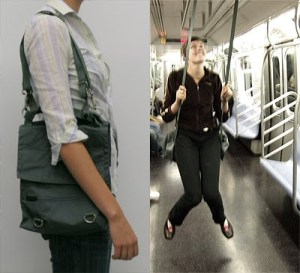I believe that one of the main reasons I enjoy the paper craft, is due to my love of the material: paper. Although I’ve always had a special fascination for paper, it has taken me a while to find my own way of working with it; and then it took a little longer to find out that the technique I have been using so intensively is called quilling – it involves the use of strips of paper that can be rolled, shaped, and glued to the background. This artwork is the first piece in the series of works which I consider a declaration of love to the material and the technique. It is also an attempt to raise a profile of this paper craft, which has been previously regarded with some disdain, and to bring this type of artwork on a new level in terms of its ability to convey meaning and emotions. Initially, I was concerned about the limitations of the quilling technique and the material from which the work is constructed – paper & card – as it very much dictates what can and cannot be said within the boundaries of the chosen medium. However, this material limitation turned out to be a strength for me: there is the potential to contain thoughts and ideas in unique ways so that the medium can become a significant part of the message. Thus, after working with paper quilling for over three years I am at a point where I don’t feel constrained by the technical challenges of the medium; I’m eager to keep experimenting, and this piece is just a beginning. I t would be difficult to avoid mentioning one of the questions I am often being asked about my commercial paper works, which is, ‘How long does it take’. Obviously this work took a lot longer than any of the commercial works I’ve done so far. In this laborious work the process has also become important: to my opinion, spending endless hours and days on a piece of work gives the suggestion of great care; not in vain the notion of ‘care’ is implied in the word ‘to craft’ itself. Being a three dimensional object, the artwork offers multiple views depending on the angle of perception and the intensity and direction of lighting. These things can drastically change the visual experiences and emotional message of the same artwork. The rough snaps below should not only help to see some work in progress stages, but also demonstrate the versatility that can be achieved by playing with lighting and angles.
Category Archives: art
Posted in art, buildings, cardboard, cardboard heaven, city, cute, nina lindgren
SUPAKITCH & KORALIE – VÄRLDSKULTUR MUSEET GÖTEBORG.
SUPAKITCH & KORALIE – VÄRLDSKULTUR MUSEET GÖTEBORG.
Wall painting by Supakitch and Koralie at the VÄRLDSKULTUR MUSEET GÖTEBORG / SWEDEN. With the support of POSCA
The Land of Giants.
American firm Choi + Shine Architects recently received the 2010 Boston Society of Architects Award for Unbuilt Architecture for their project “The Land Of Giants”, which they originally designed for the Icelandic High Voltage Electrical Pylon Competition back in 2008.
Making only minor alterations to well established steel-framed pylon design, the architects created a series of towers that are powerful, solemn and variable. The pylon-figures can be configured to respond to their environment with appropriate gestures.
http://www.thehighdefinite.com/2010/08/choi-shine-architects-the-land-of-giants
Swing on the Subway.
After 9-11, that sick, sinking feeling many weary commuters experienced stepping onto a crowded NYC subway car was magnified by the MTA’s stentorian banner campaign, “If You See Something, Say Something.” Artist Caroline Woolard has found a delightful way to strip away the defensive layers of suspicion and dread that can accompany a subterranean commute, replacing default anxiety with spontaneous joy by crafting a backpack that transforms easily into a swing! Using 1000 mesh “L-train grey” cordura, webbing, sliders, hooks, velcro, and snaps, Woolard’s “bag swing” is fitted with sturdy straps that hook easily around the handrail of the subway:

Much of Woolard’s creative output seems to revolve around the idea that we should all strive to come into the moment, moving activelythrough the world rather than shuffling absently through it. Her emphasis on exploring pedestrian space and “cultivating everyday magic” in an urban environment encourages viewers (and participants) to reexamine their relationships with the overwhelmingly massive, immovable urban architecture they live in.
What is the relationship between play and revolution? Creating fissures in reality opens up the possibility for change: change in the everyday/monotonous routine, change in assumptions about ‘facts’, change in the world in general. The act of “making strange” allows a new perspective for reassessment and critique. Nothing is fixed and anyone can make the environment around them better.
Says Woolard: “I hope that the innocent amusement of swinging on the subway eclipses the current atmosphere of insulation and suspicion.”
http://coilhouse.net/2008/12/playful-revolution-caroline-woolards-subway-swing
This is awesome, haha.
Posted in art, bag, Caroline Woolard, fun, happyness, if you see something say something, joy, laugh, metro, new york city, play, subway, swing









